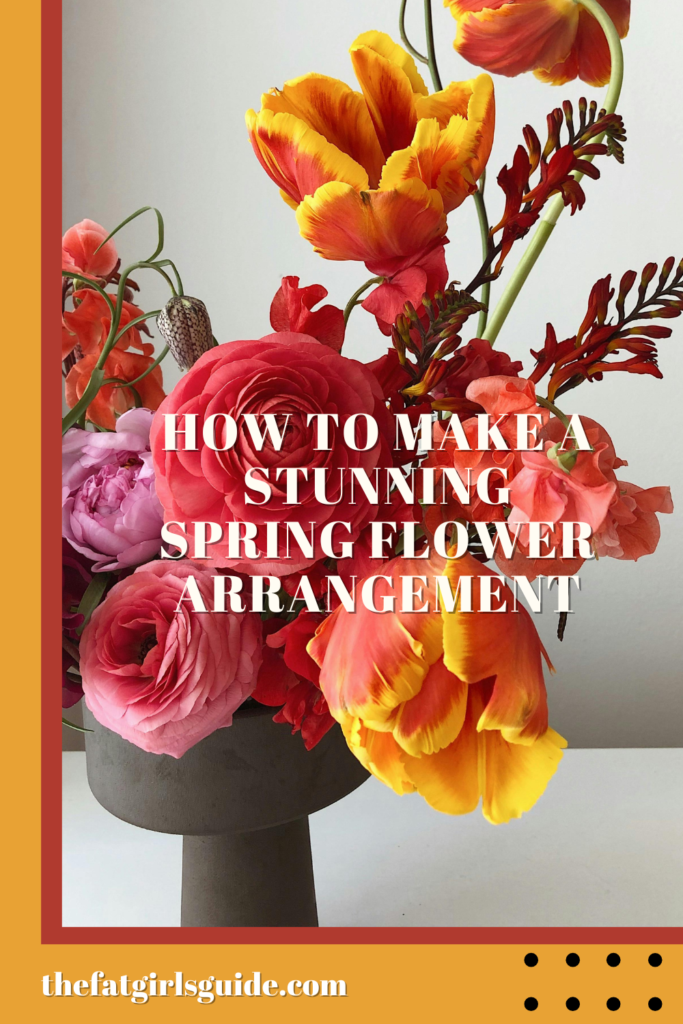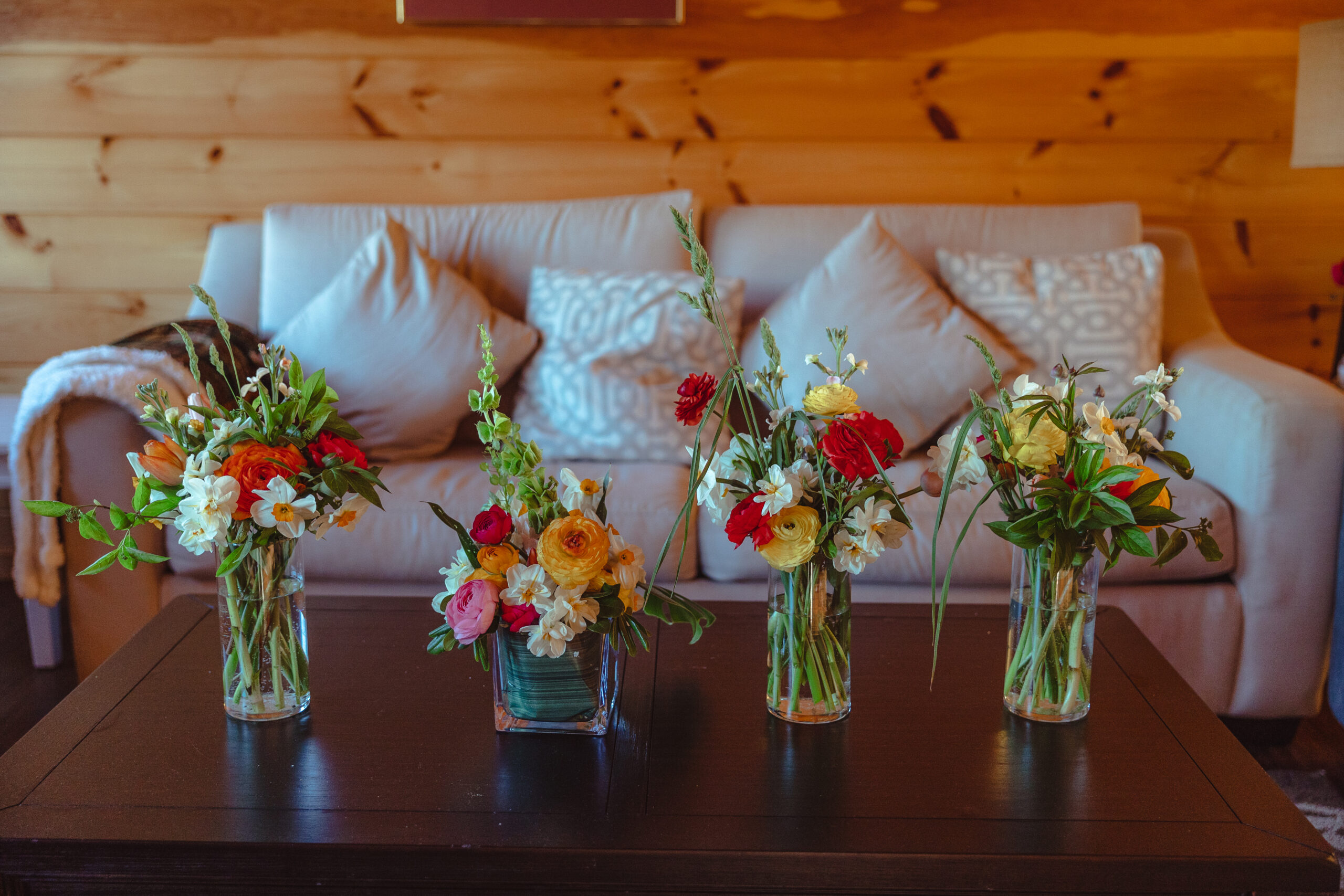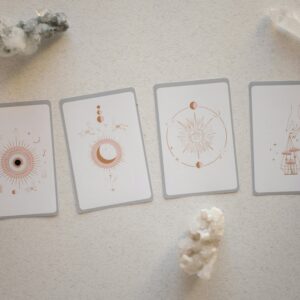The first day of spring is days away and we want to show you how to make a stunning spring flower arrangement. There’s something magical about how the world awakens in a vibrant symphony of color and fragrance in spring. Whether you’re celebrating the return of sunshine, hosting a garden party, or simply looking for a way to brighten your home, creating your own spring flower arrangement is a joyful and rewarding experience.
And the best part? You don’t need to be a professional florist to craft a stunning arrangement — you just need a little creativity, and a touch of nature. Our clients participated in a spring flower arrangement workshop at a previous Fat Camp in Finger Lakes, New York. We’re sharing a few of our favorite tips from that workshop and reminding you to sign up for Fat Camp: Fall Foliage in Finger Lakes, New York.
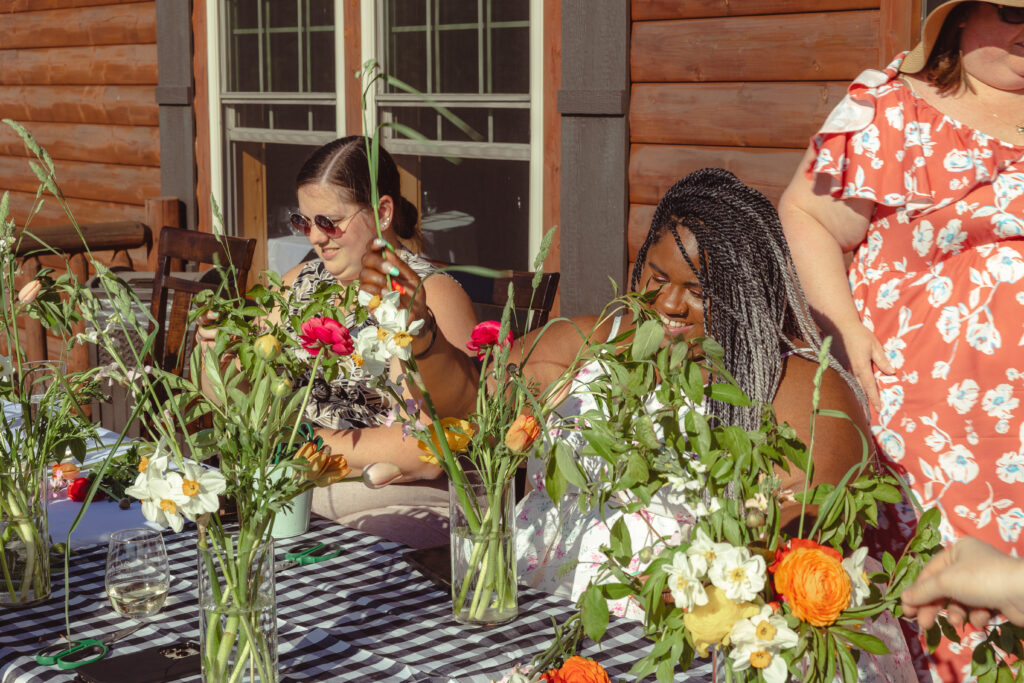
The Beauty of Spring Flowers
Spring flowers represent renewal, hope, and the beauty of new beginnings, making them the perfect symbols for personal growth, gratitude, and appreciation of life’s fleeting moments. In our fast-paced lives, we often overlook the small moments of beauty around us — the soft scent of hyacinths after rain, the cheerful glow of daffodils in the sun, or the gentle sway of tulips in a spring breeze. Crafting a bouquet isn’t just about decoration — it’s about connecting with nature, celebrating seasonal abundance, and finding joy in creativity.
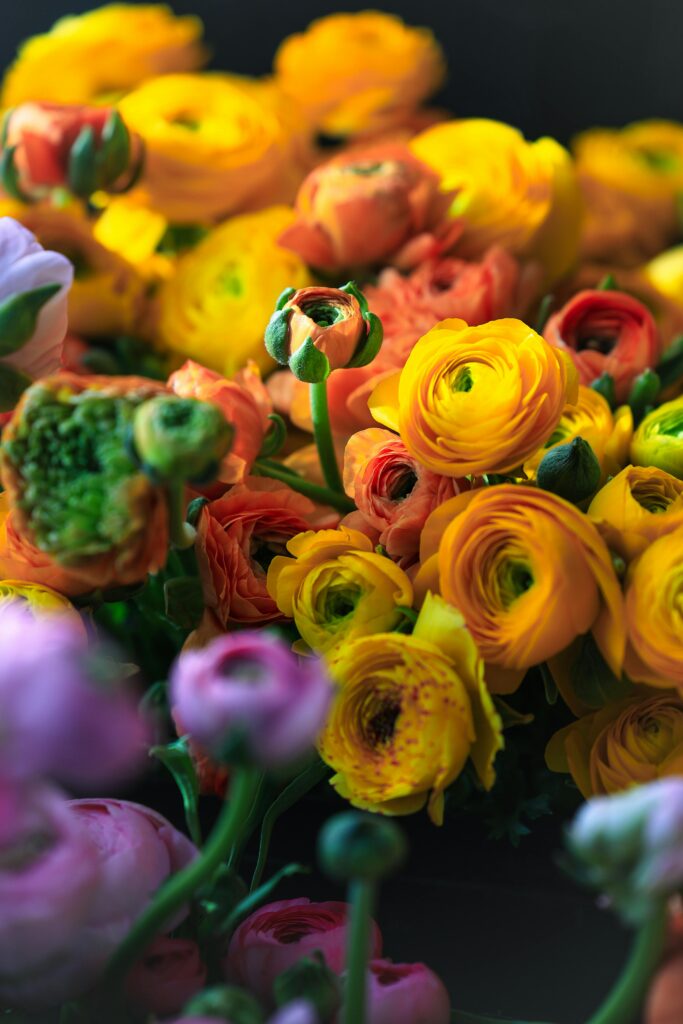
Creating a spring flower arrangement is not just an art form — it’s a celebration of life, a grounding ritual, and a reminder to pause and savor beauty. Flowers teach us that beauty is fleeting but precious, just like the moments we cherish with loved ones, the warmth of spring sunlight, or the quiet joy of a rainy afternoon.
Essential Spring Flowers & Their Meanings
Here are some stunning spring blooms to include in your bouquet, along with their traditional meanings:
- Tulips – Love, grace, and new beginnings
- Daffodils – Rebirth, optimism, and resilience
- Hyacinths – Peace, beauty, and sincerity
- Peonies – Prosperity, romance, and good fortune
- Ranunculus – Charm and radiance
- Lilacs – Youthful innocence and first love
- Cherry Blossoms – Renewal and the fleeting nature of life
- Anemones – Anticipation and protection
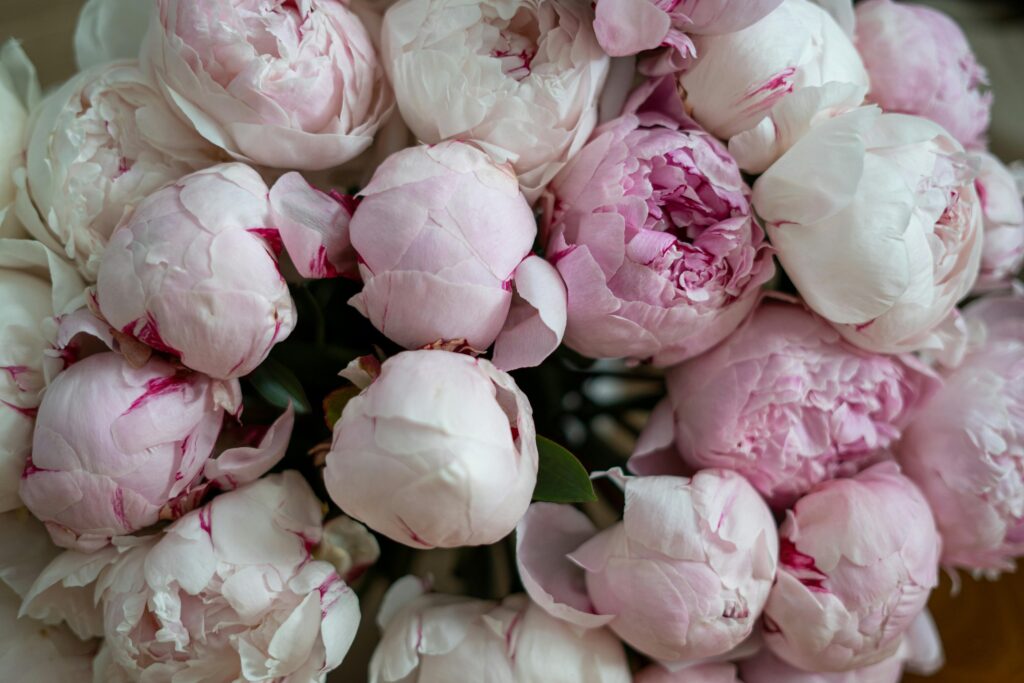
Tools You’ll Need
Before you begin, gather these essential tools to make your flower arranging smooth and enjoyable:
- Sharp floral shears
- A clean, bright workspace
- Clean vase (glass, ceramic, or rustic basket)
- Soft cloth for wiping stems
- Floral tape or chicken wire (for structure)
- Water and floral preservative (optional)
- Lazy Susan (optional for easy rotation)
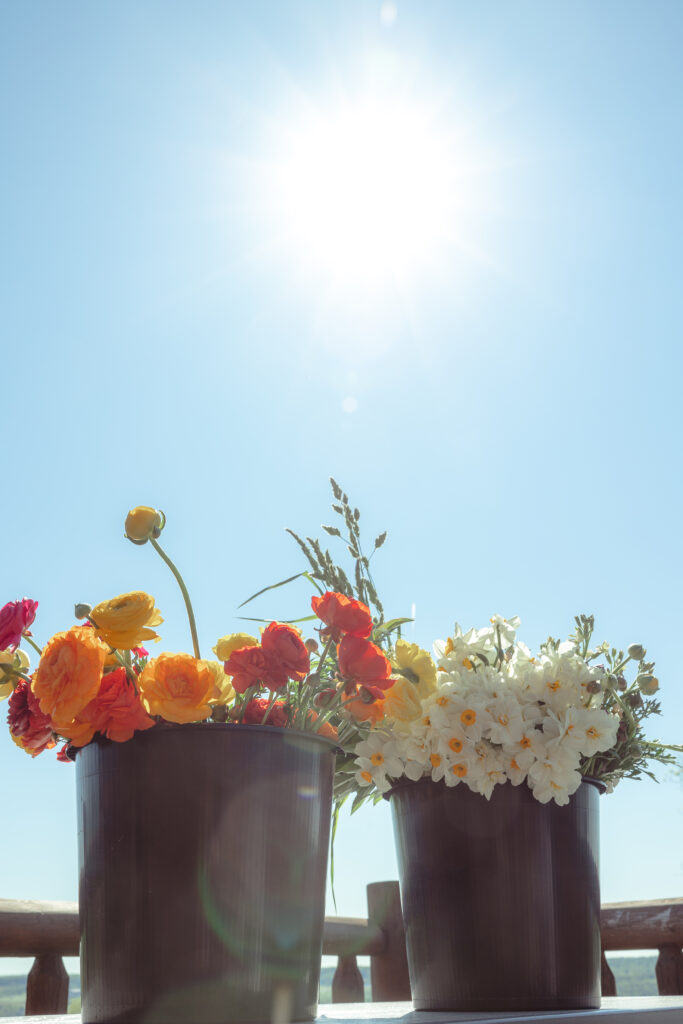
Step-by-Step: How to Make the Spring Flower Arrangement
Step 1: Choose Your Color Palette
Spring flowers burst in every shade, from soft pastels to bold brights. Decide if you want a soft romantic bouquet (pinks, lavenders, whites) or a bold, cheerful one (yellows, corals, blues). Selecting 3-4 complementary colors creates visual harmony.
Tip: Let your bouquet reflect the mood — pastels for calm elegance, vibrant hues for energetic joy.
Step 2: Prep Your Flowers
- Remove leaves from the bottom third of each stem to keep the water clean.
- Trim stems at an angle for better water absorption.
- Place flowers in lukewarm water while you work to keep them hydrated.
Step 3: Create a Base Structure
Start with greenery — eucalyptus, ferns, or ivy — to create a natural frame. This gives shape to your bouquet and serves as a lush backdrop for your flowers.
Tip: Use floral tape or chicken wire inside your vase to hold stems in place and make arranging easier.
Step 4: Add Focal Flowers
Choose 2-3 larger blooms (like peonies, tulips, or ranunculus) to act as the focal point. Place them slightly off-center for a natural, asymmetrical look.
Tip: Odd numbers of flowers (3, 5, 7) create organic balance.
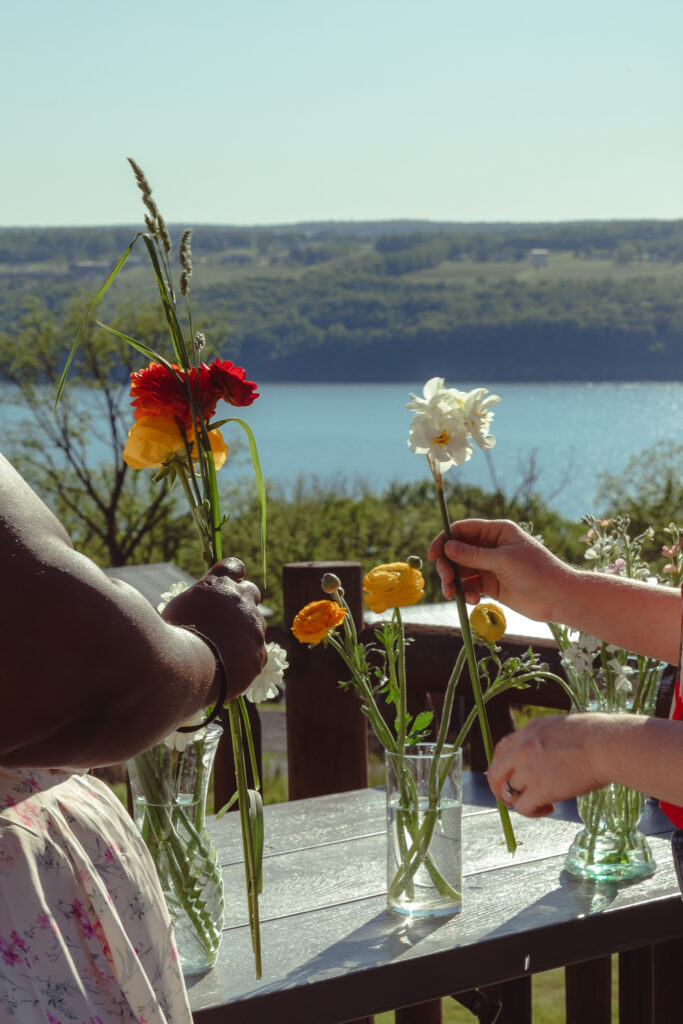
Step 5: Layer in Supporting Flowers
Fill in around your focal flowers with medium-sized blooms, such as anemones, lilacs, or hyacinths. Place these at varying heights to add depth and dimension.
Step 6: Add Texture & Fill Gaps
Use smaller accent flowers and delicate blooms — like cherry blossoms, daffodils, or baby’s breath — to fill in any gaps. Incorporate a mix of textures for visual interest.
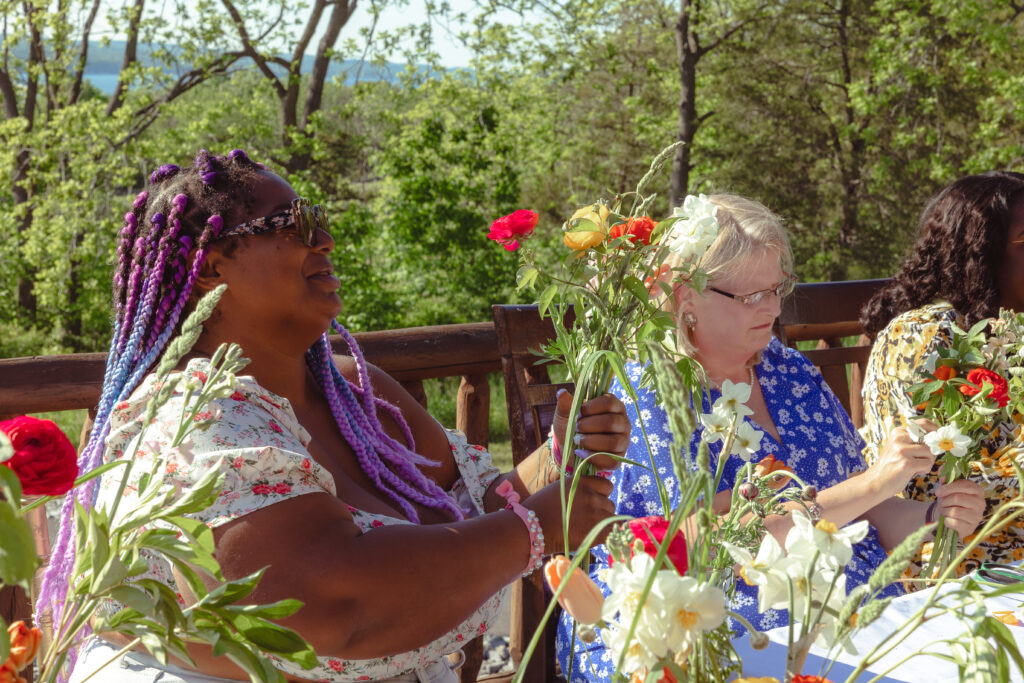
Step 7: Final Adjustments
- Spin your vase to view your bouquet from every angle.
- Adjust stem heights, trim excess leaves, and fluff petals.
- Refresh water with flower preservative to prolong freshness.
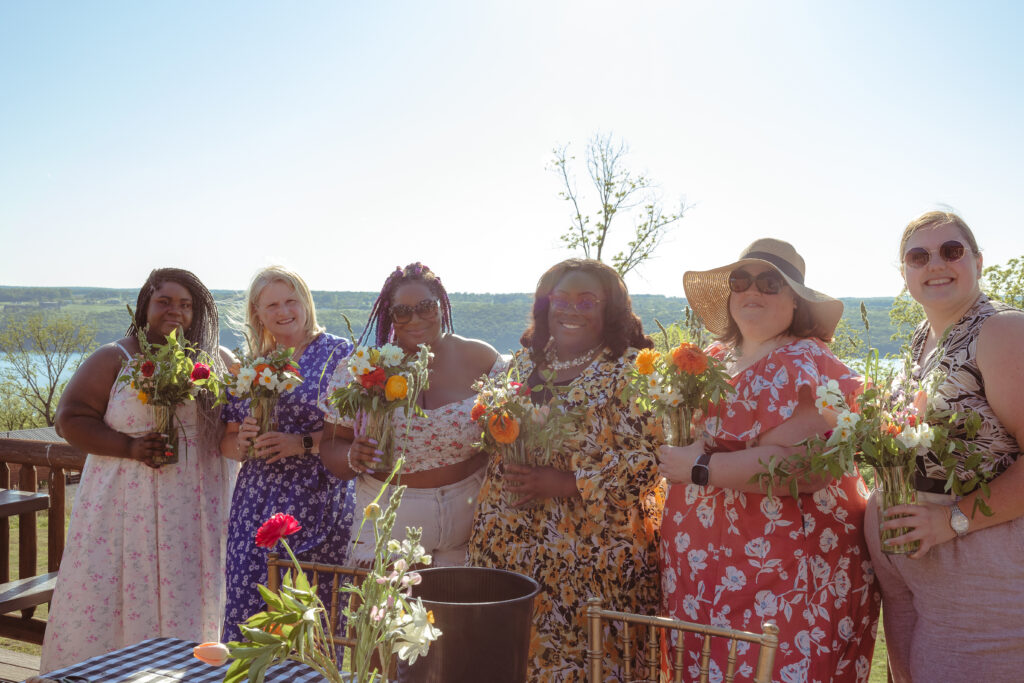
Tip: Embrace imperfection! Nature is wild and whimsical — your bouquet should be too.
Embrace Your Inner Florist. Whether you’re creating a spring flower arrangement for yourself, a friend, or as a centerpiece for your table, take time to appreciate every petal, every fragrance, and every hue. Spring flower arrangements are not just decorations — they are love letters to the season and testaments to nature’s beauty.
